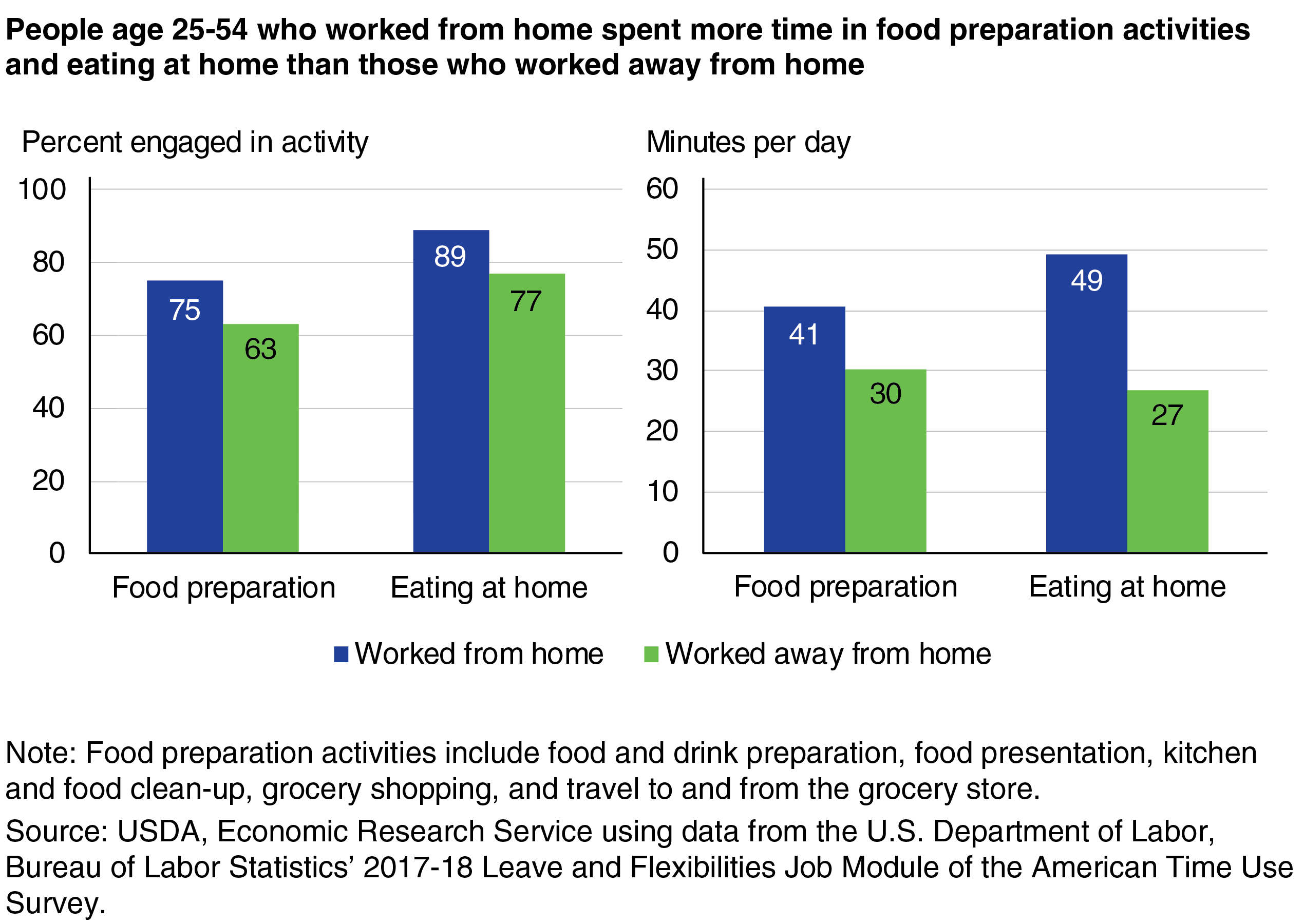
Working From Home Leads to More Time Spent Preparing Food, Eating at Home
- by Eliana Zeballos and Brandon J. Restrepo
- 2/1/2021
The United States recorded its first confirmed case of Coronavirus COVID-19 on January 20, 2020. Since then, COVID-19 has spread to every State in the Nation. On March 16, 2020, to slow the spread of COVID-19, the Federal Government announced social distancing guidelines, and many U.S. jurisdictions followed by issuing stay-at-home orders. As a result, many Americans have been working from home. The widespread impact of the pandemic raises an important question: Do Americans who work from home allocate their time spent on daily tasks differently than those who work away from home?
While researchers do not have time-use data from the COVID-19 period, analyses of time-use patterns in the past may provide some insights. USDA, Economic Research Service (ERS) used data from the 2017-18 Leave and Flexibilities Job Module of the Bureau of Labor Statistics’ American Time Use Survey (ATUS) for their analysis. Specifically, they studied the amount of time survey respondents spent in food preparation and eating at home according to the location from which they worked the day covered by the ATUS interview. In particular, they compared prime working-age adults (25-54 years old) who worked exclusively from home to prime working-age adults who worked exclusively somewhere other than their home.
In 2017-18, over an average weekday, 64 percent of prime working-age adults engaged in food preparation activities—food and drink preparation, food presentation, kitchen and food clean-up, grocery shopping, and travel to and from the grocery store—and they spent an average of 31 minutes engaged in these activities. When researchers broke down the overall sample by the worker’s worksite, they found differences in time spent preparing food. Prime working-age adults who worked from home were more likely to engage in food preparation activities (75 percent versus 63 percent) and to spend more time on these activities than individuals who worked away from home (41 minutes compared with 30 minutes).
Turning to food consumption, a total of 78 percent of prime working-age adults reported eating at home on an average weekday over 2017-18, and they spent about 29 minutes doing so. Individuals were more likely to eat at home when they were working from home than when they were working away from home (89 percent versus 77 percent). Individuals who worked from home spent 49 minutes eating at home, which was nearly double the amount reported by individuals who worked away from home (27 minutes).
These results show significant variation in the daily time allocation of workers in their prime working years and suggest that working from home may allow for substantially more time to prepare food and consume food at home. If the greater time spent preparing food translates into eating more home-prepared meals and less eating out, teleworkers may also experience a healthier diet. Past studies by ERS researchers have found that home-prepared meals tend to be lower in calories and higher in positive nutrients than meals prepared away from home.
This article is drawn from:
- Restrepo, B. & Zeballos, E. (2020). "The effect of working from home on major time allocations with a focus on food-related activities". Review of Economics of the Household. doi: 10.1007/s11150-020-09497-9.


